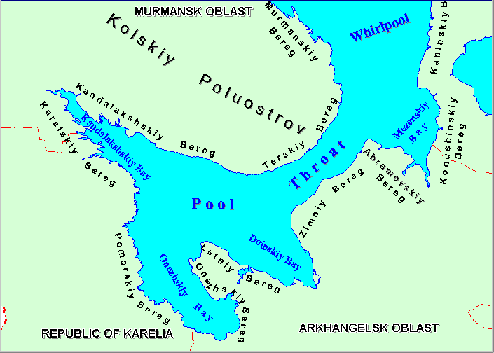
Fig. 1 The Watershed of the White Sea

Fig. 2 Chlorophil concentration in the surface horizon of the White Sea.
Onego Gulf. July 2001


Fig. 3 Expedition on the White Sea


Fig. 4 Temperature of the surface water derived from the satellite data

Fig. 5 The White Sea